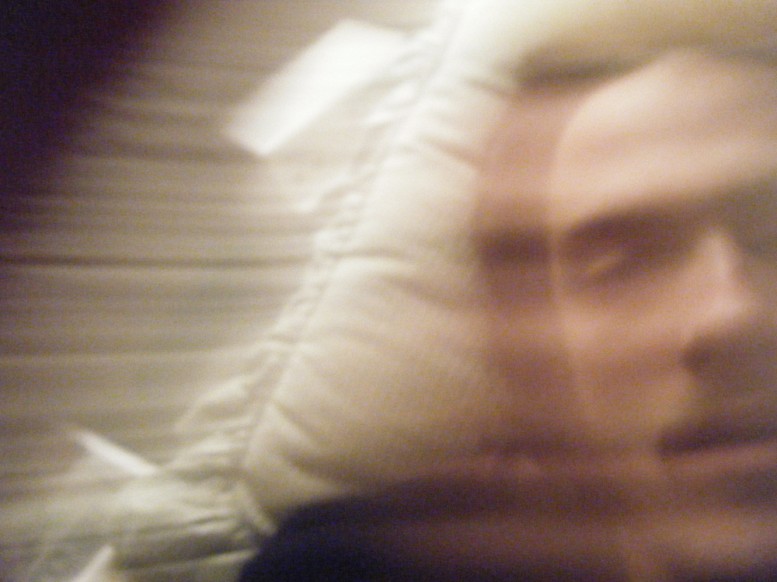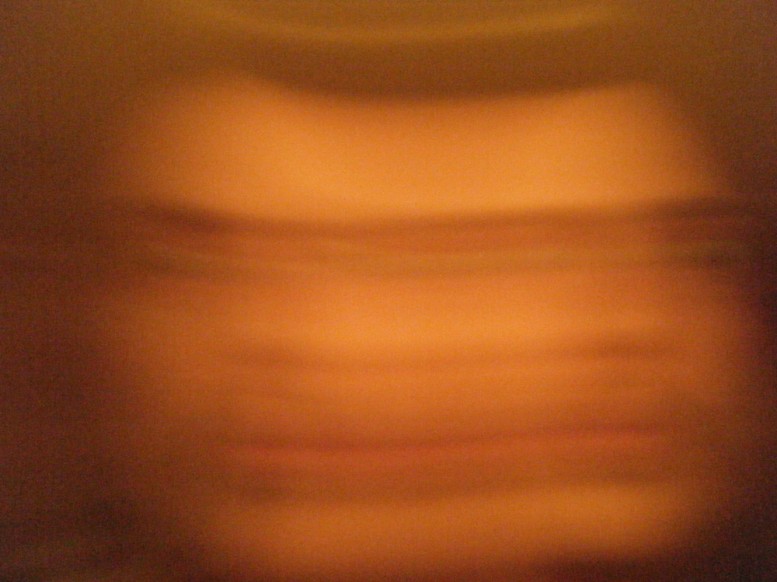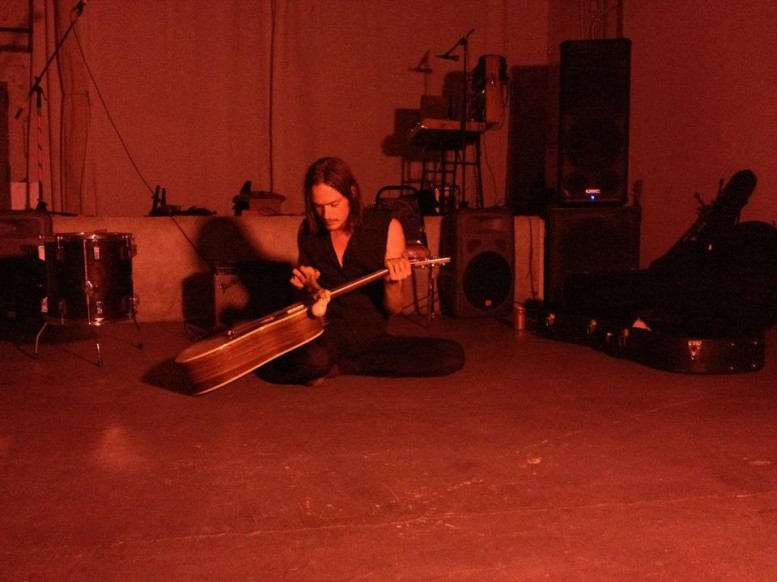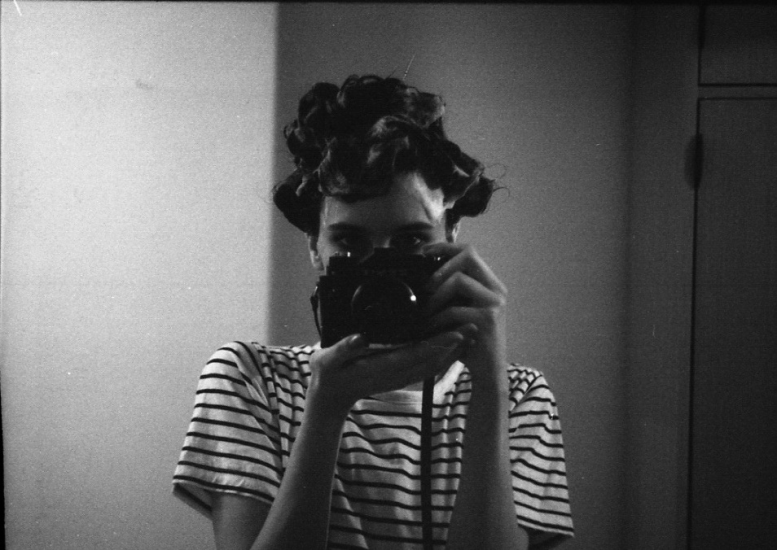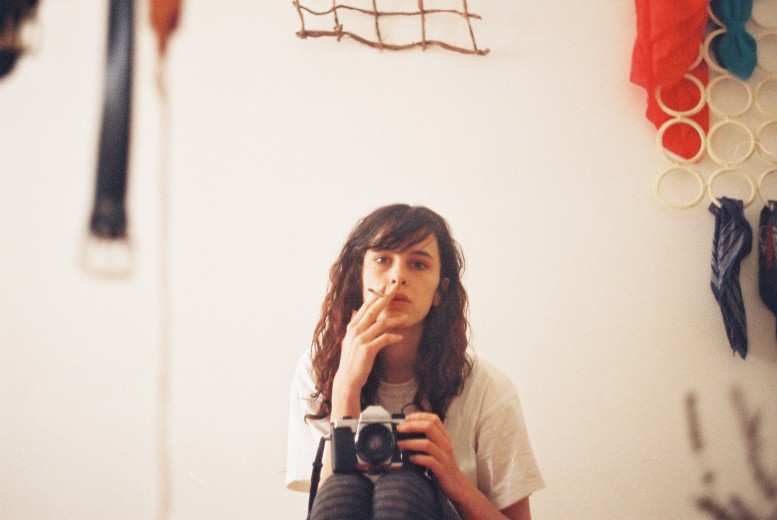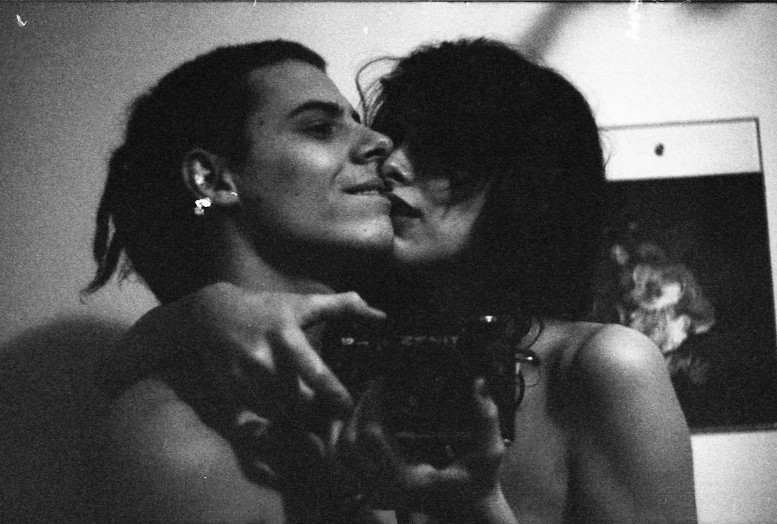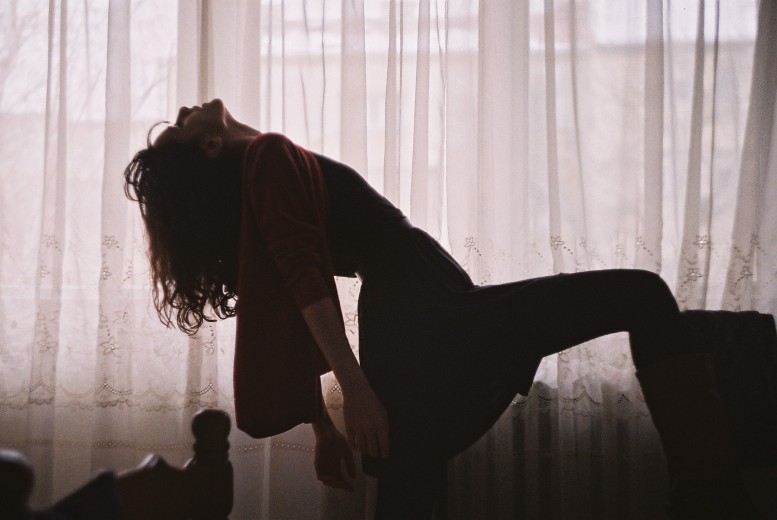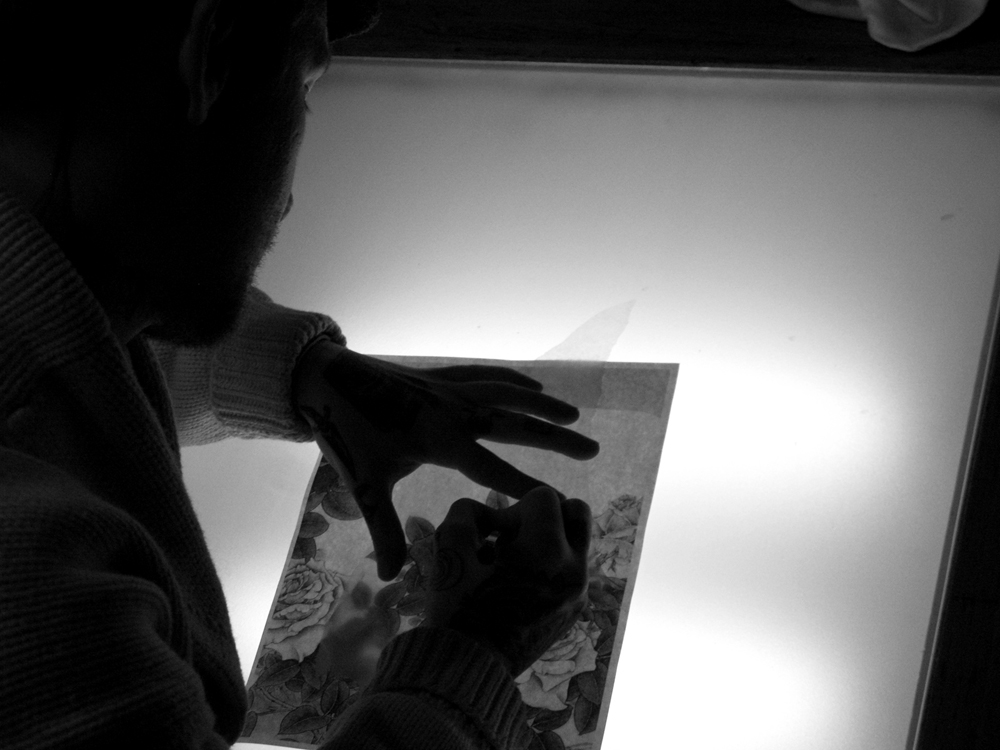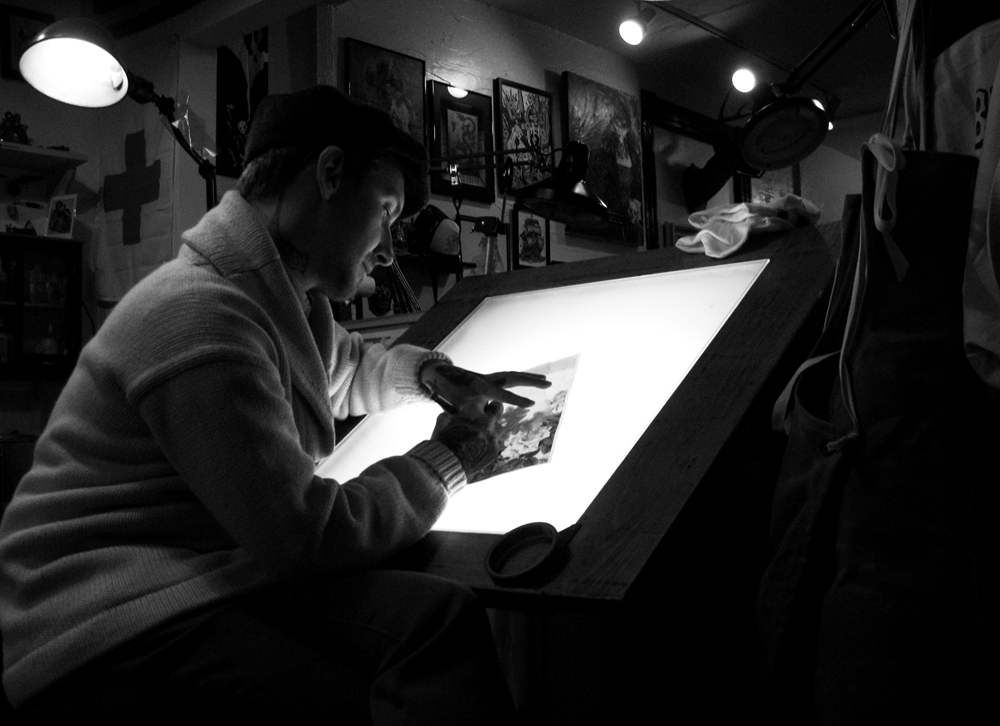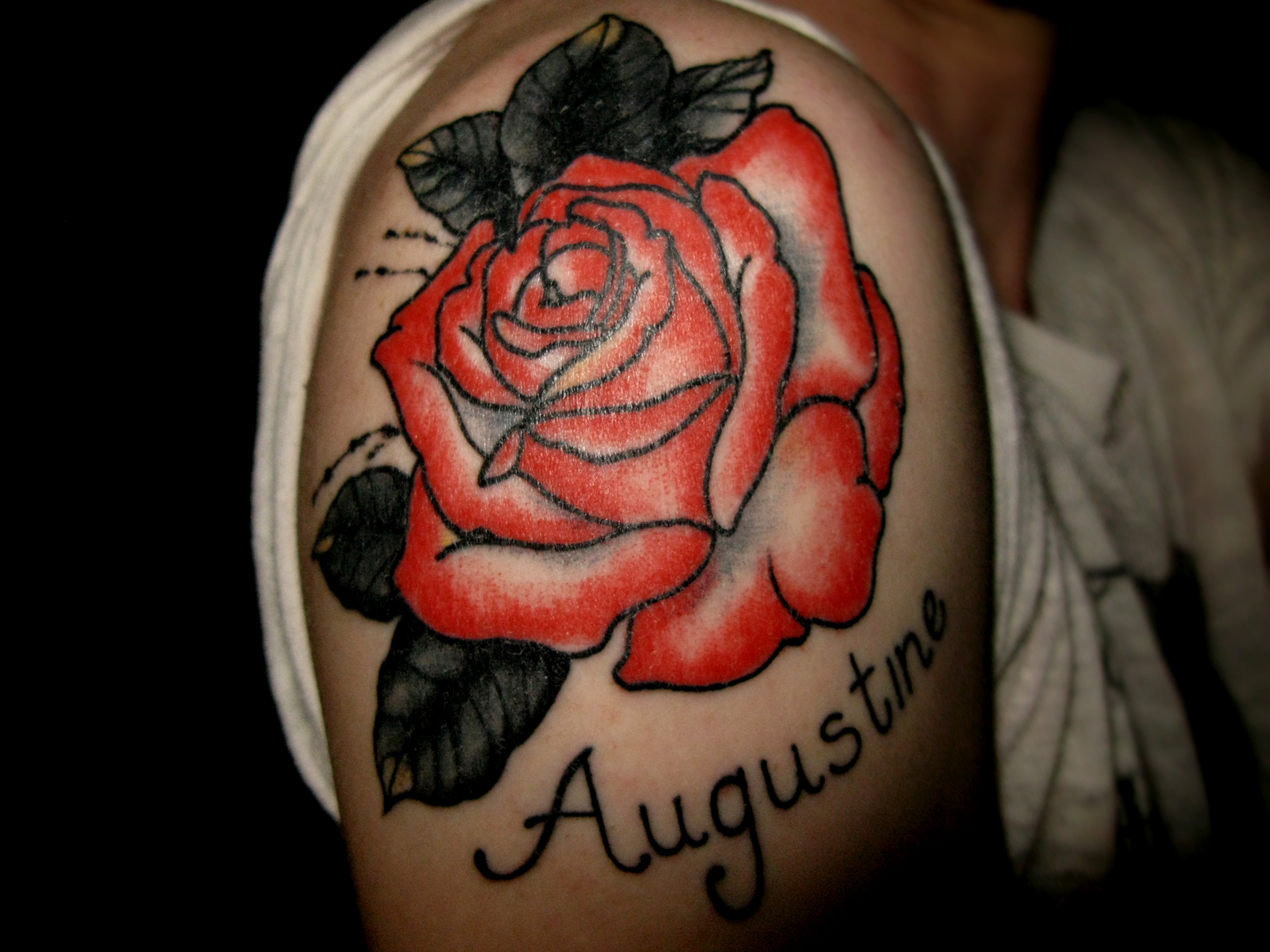Polly Borland’s idea of heaven isn’t your average person’s idea of heaven. Her heaven is a dark heaven, where the angels are fully-matured adults in soiled diapers, sucking away at a binky through a stubble-lined, razor-burned mouth. The Australian-born Borland, who spent half her life in London and is now based in Los Angeles, has the uncanny ability to make the fetish of adult infantilism look strangely playful and romantic. She spent five years documenting the lives of adult babies – photographing their every nap and nappy change. Tomorrow, she will be showing The Baby series as part of her first solo show in Los Angeles at Mier Gallery – her long-time collaborator Nick Cave curated the first ever showing of The Baby series at The Meltdown Festival in London in 1999. Shortly after exhibiting the Baby series, she was commissioned by Buckingham Palace to shoot Queen Elizabeth II’s portrait to commemorate her Golden Jubilee. Borland has commissioned UK prisoners to turn the images into intricate tapestries, which will also be on view. We got a chance to catch up with Borland at her Downtown Los Angeles studio to discuss her solo show and her life on the road with adult babies.
OLIVER KUPPER: You are essentially new to Los Angeles, what prompted the move out here from London?
POLLY BORLAND: Well I came here kicking and screaming because my husband is a movie director. He’s not a gun-for-hire, he did The Proposition and Lawless. He kept saying, “We’ve got to move to LA,” after The Proposition and I kept saying, “We’re not moving to LA.” So, we showed up and then the culture shock…. I know every city is pretty tough. London is pretty tough. But everything here seems to be overshadowed by the movie industry and all of that is really smoke and mirrors, kind of secrets and lies. That’s what kind of hit me first. And it kind of freaked me out.
KUPPER: Have you guys come out of that culture shock?
BORLAND: Yes, and my main focus now is looking at human connection, and I didn’t know anyone here, so then I started creating figurative images out of stuffed stockings and things like that, which sort of connected to my previous work.
KUPPER: Is that the Smudge series?
BORLAND: And the Smudge series, but this was the Pupa series – and Wonk where I continued stuffing things. I think I’ve got a book, I’ll show it to you.
KUPPER: You are about to have your first solo show here, are you excited, nervous or is there an emotion that you didn’t expect having?
BORLAND: I’m nervous because Nino [Mier] suggested I show all ‘Baby’ work, which has never been shown in its entirety. It’s 80 photos, they’re very confronting and a lot of them are x-rated. They’re not easily digested and universally, people just think they’re creepy and disgusting. And even when I first took the photos to the publisher, Power House Books, and Susan Sontag, who did the essay, thought I was going to be a superstar, and when the book came out everyone was just freaked out by it.
KUPPER: People view things at face value.
BORLAND: Even Susan said, “I just didn’t expect it,” that’s how much she loved the work, so I’m very nervous. At the same time, I’ve realized that going through this trauma and coming out the other side and with Trump being voted in, I’ve kind of re-found my voice again. I was in kind of fear and terror for quite a long time. It culminated in Trump being elected, and me having a show, and then seeing other people and me having to find our voices. That’s really what art’s supposed to be anyways. So, I’m kind of excited for it.
KUPPER: What about the Queen series?
BORLAND: I feel like the Queen tapestries are equally subversive but not as in-your-face. I’ve had them stitched and show them on the wrong side because on the right side, they all look the same. The backside is just wild. I was talking to this Italian dealer and he loved the tapestries and I said, “The problem is I don’t know how to do it.” If I were to learn, it would take me years to do one. I was researching, researching and I ended up contacting the craft association of England. Then I found this charity that’s been going since the 70s - it’s called Fine Cell Work. Prisoners get paid to make certain arts and crafts. They provide cushions to the Victoria and Albert Museum, they do cushions for the Catholic Church; it’s a really well-established charity. And apparently, they like doing my stuff because my work is so unusual. But, the prisons have started complaining about the content. The Queen’s okay with them, even though she’s the one that’s locking them up.
KUPPER: I want to jump back into talking about the Baby series, because I think it is some of your most important work, how did you get introduced to this world?
BORLAND: Yeah, that’s the bulk of the work. The Babies were introduced to me by a friend of mine who was at Saint Martin’s College of Art and one of her lecturers told her about this phenomenon, and this was in the early 90s. And I’m like, “No,” and we both kind of laughed and she double-checked if they exist because I was like, “where can I find these people?” She said why don’t you Google Kim West? It’s not rubber fetish, but fashion. She was wild and I rang her and I was like, “Do these people exist and where do I find them.” In those days, the Internet wasn’t a big thing, and she said that I had to go into a Newsagent, which is where you buy magazines and newspapers in England, and go to the top shelf and look at the English sex magazines for the classifieds. So I did that and looked in the back and saw this Hushaby Baby Club phone number. And I thought, “Oh my god, I lucked out!” I thought I’d have to write a letter.
KUPPER: So this is a fetish and they want people to be in their world.
BORLAND: Yeah, when I rang this woman called Hazel Jones, she said, “Sure, come and have a look.” And I was working for the Independent, which was a newspaper with color supplements and they were known for their photography. So I went to the senior editor and he laughed like they all did and went, “sure.” So me and a journalist went to go check it out, and she was one of their top journalists, and we spent an afternoon with Hazel and, you know, huge babies are crawling around because she was a mommy, but she also ran a bed and breakfast and she’d make huge cots and huge cribs. The whole thing was set up like a giant-sized baby land, but she also made big baby clothing for these people.
KUPPER: So, she was like a madam, but also their mummy.
BORLAND: How it happened was she was making bondage-wear and she kept getting requests for baby-wear in mail order. She was doing that and then she realized there was a whole market for adult baby-wear that no one had tapped into, so that’s how her business developed. Then, she built the bed and breakfast baby land and then formed the Hushaby Baby Club. So, then we were invited back to do this weekend-long party, I mean it was really surreal. The journalist couldn’t deal with it because it was pretty full on. They were drinking alcohol, but then they’d regress. They’d be dressed up as babies, be adult for a few minutes, but the majority of the time they were babies. Some of them were purist so they wouldn’t drink alcohol, but some of them went to and fro between being a baby and an adult.
KUPPER: You became fascinated by these adult babies.
BORLAND: I became totally fascinated because it had every element that I loved: the surreal, the pathos, the seedy-ness. Everything about it was my idea of heaven. I had to disguise their faces; they didn’t want to be seen in a national publication. I rang Hazel Jones and said I’m thinking about doing a book on this, which ones would I contact and do you think they’d reveal their identity?” because I couldn’t do a book without seeing their faces and she said, “Well, you can try.” So, I contacted them directly.
KUPPER: How long did you spend with them?
BORLAND: It became a five-year journey. We traveled to LA to go to Disneyland and we did a road trip down, whatever highway it is, to San Francisco to meet the adult babies in San Francisco, there was a club. Then I went to France and did the same thing. I showed up, had to meet the guy, I got picked up, him and a couple of other adult babies went to the Swiss border to stay in a chalet for the weekend. And this was full on, it was defecating - the smell in the car, I was full-on carsick. Full on. But you know again, in the interest of art…I don’t believe now that I would have the guts to do that…I don’t know if I would.
KUPPER: Did you ever feel in danger?
BORLAND: No, because that’s the thing, they were the sweetest, kindest, really passive sort of people…they’re babies.
KUPPER: Did you talk to them about their fetish?
BORLAND: This is the thing, I thought there was some big psychological secret to it, I was trying to figure it out and I had a lot of empathy because I lost my mother when I was young. So, I kind of understood what it was like to not really want a tight responsibility and not be 100% focused on, all of that. So, I kind of got it on that level and identified, and I think that’s why I got along so well with them. I think the intensity of the photographer’s gaze, it’s like the mother’s gaze. I’m really 100% focused when I’m looking through a camera. We all got along extremely well, but I did a lot of talking. The other interesting thing is that it was very individualized. Some of them were into terry towel nappies, and some of them were into disposable nappies, and some of them were into being girl babies, some of them were into being boy babies.
KUPPER: Susan Sontag’s introduction is quite amazing—how did she come to write that?
BORLAND: I was photographing her for The Guardian and she said, “What else do you do? I can tell you do something else.” I said, “What do you mean? Well, I’ve got this series of photos.” I didn’t say anything to her - she prompted the conversation. Later, I told her about the babies and she said, “Oh, I’m coming to England next week, I want to see the photos.” When she came to England, and I had a portrait show over the road from where she was staying, we had breakfast together with my husband. She went through the photos and kept saying, “Who’s writing the essay?” She kept hinting at it, and I finally said, “Do you want to do it?” She said, “Of course I want to do it!” Incredible.
KUPPER: Nick Cave curated your first showing of this work, what was that process like and how did you meet Nick because you have collaborated quite a lot together.
BORLAND: We’ve known each other since we were 19 years old. The first time I met Nick was at a party but it wasn’t until later that we became friends, when he collaborated with my husband on writing Ghosts…of the Civil Dead. Incredible prison drama, Australian drama and Nick co-wrote it and did the music. He was amazing in it, he had a little cameo, and we became friends then. Then he moved to Germany and England then we moved to England. I sort of documented him for 40 years or something and we’ve been really, kind of like, best friends. Nick saw the baby pictures and loved them, still loves them. He didn’t show all of my work but he was the first one to publicly show it.
KUPPER: Where was that show?
BORLAND: He was curating at Meltdown Festival at the Southbank Centre in London. Nina Simone played – it was incredible.
KUPPER: Back to the history of photography, it seems like Australia has a less notable photographic history – there have not been that many fine art photographers to come out of Australia. Helmut Newton’s wife, June, she became a photographer under the Alice Springs name and I’m wondering why that is.
BORLAND: There are a few amazing photographers.
KUPPER: But we don’t know much about them…
BORLAND: I’ve got a lot of Australian art and I think another part of the reason is Australia, in the old days before the Internet, was so isolated, but you’ve got to look up Rennie Ellis, he’s fucking amazing. We always used to make fun of him when we were students. We’d say, “Who’s that old guy,” you know sort of creepy, why is he here, he was at every music event, always there, in any night club. Then this huge book was produced of his work and he photographed ACDC, like documentary style and they’re incredible photos. There is this photo he took at a Saints concert, some people think that Saints were the first punk band in the world, and Nick Cave is a teenage boy in the audience looking focused, like analyzing this guy performing. There is another woman called Carol Jerrems that died young and she was really incredible. So Carol Jerrems, Rennie Ellis, well… Helmut Newton lived in Australia, that’s where he met his wife.
KUPPER: Helmut Newton was imprisoned for a while, right?
BORLAND: He fled Germany, and then him and his parents ended up in Singapore, and then he went to Melbourne where he became a portrait/wedding photographer. He took my parents’ wedding photos. I’ve got all of the wedding photos that he took and his name is embossed, because you know wedding photographers used to emboss their name?
KUPPER: Oh yeah, of course! I want to talk about your Queen portraits – what was your reaction when you got that call and how did that commission come about?
BORLAND: That came about because of the show at the National Portrait Gallery. Basically, it was coming up to be the Golden Jubilee so it was the end of the 90s and a mediator said to me, “The Golden Jubilee is about to happen and we’ve decided to give a lot of different people a go at photographing the queen. Would you be interested?” And I’m like, “Well, yeah.” And they said, “The only catch is you’ve got five minutes.” Eventually it all worked out and I was contacted by the palace. We were allowed as much time as we needed to set up, but before the shoot, they direct you around the palace and you pick the room that you wanted to photograph her in. I took two rolls and I had two different setups, one backdrop in front of another, one camera in front of the other. At one point I was about to manhandle her ankles because I was trying to get her to stand to the side and move to the left, but apparently, I don’t even remember, but Prince Philip was in there standing, saying inappropriate things as usual. I got two good shots.
KUPPER: There’s kind of a novelty about shooting the queen especially now that you get to sort of play with the images.
BORLAND: Exactly. And look, a lot of my favorite subjects were politicians because I knew that they never did what they said they were going to do. They never really followed through on what they believed. It just felt to me like the embodiment of hypocrisy. Everything’s about money, it’s not about helping people or social responsibility.
KUPPER: As A photographer, what is the greatest thing you’ve learned about the human condition?
BORLAND: I think it would be that most people are craving attention or recognition of some kind, but I really see parallels between… to me I could really see the link between the famous and various subcultures. I don’t know if that’s so true anymore because I think the disparity between rich and poor is so bright that I think you know that this is a real disconnect. So, there’s this kind of a weird thing going on that I’ve found… I think I’m going to have to think about that one. I mean “the human condition” what does that mean to you?
KUPPER: It’s different to a lot of different people, but the human condition in the sense of not the meaning of life, but sort of what our wildest pursuits are in a sense, our pursuits as humans.
BORLAND: You know, and I heard this, actually Kendrick [Lamar] said it recently – really it’s all about love. We just want to be loved and to be a part of something, and being part of a community is really important. I mean for me, I can’t understand differences because I don’t think there are any, all our blood is fucking red.
The Babies and Tapestries will be on view from July 22 to August 19, 2017 at Mier Gallery, 1107 Greenacre Ave Los Angeles, CA. Text and photographs by Oliver Maxwell Kupper. Follow AUTRE on Instagram: @AUTREMAGAZINE




